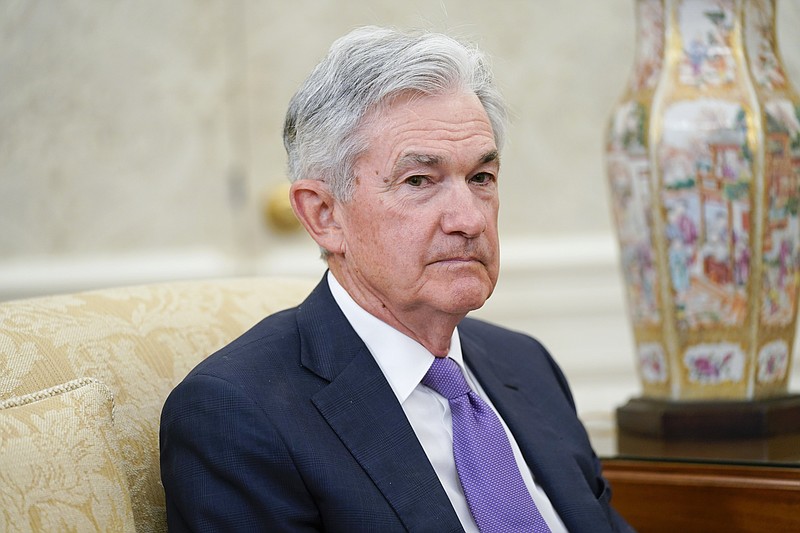By CHRISTOPHER RUGABER
AP Economics Writer
WASHINGTON (AP) -- For months, Chair Jerome Powell has held out hope that the Federal Reserve will be able to raise interest rates high enough to throttle rampant inflation without tipping the economy into recession.
Yet with the Fed set to announce another sharp interest rate hike after it meets this week, days after the government issued a scorching inflation report, the likelihood that the central bank can engineer a so-called "soft landing" appears to be dimming.
With inflation at a four-decade high of 8.6%, Fed officials are likely this year to boost borrowing rates even higher than was expected just weeks ago. The central bank may also signal, when its policy meeting ends Wednesday, the possibility of raising rates to a level that could weaken growth -- elevating the risk of a recession.
Some economists now even think the Fed may decide to surprise the financial markets this week by raising its benchmark short-term rate by three-quarters of a point, for the first time since 1994, rather than the half-point that Powell had signaled last month. Wall Street traders have priced in a 30% likelihood of such a drastic move, according to the CME Group.
Even if an economic downturn can be avoided, it's almost inevitable, analysts say, that the Fed will have to inflict some pain -- most likely in the form of higher unemployment -- as the price of defeating stubbornly high inflation.
"They need to accept the fact that you can't fight inflation without imposing some pain on the markets and the economy," said Ethan Harris, head of global economic research at Bank of America. "They shouldn't coddle the markets by kind of implying that there's no major issue here, we're going to have a soft landing for the economy, I think it's too late for that. We have to have a hard landing."
The prospect that the Fed will accelerate its credit tightening, further raising borrowing costs for households and businesses, drove the stock market sharply lower Monday. The broad S&P 500 index fell into bear-market territory, having lost more than 20% of its value since its peak at the beginning of the year.
If, on Wednesday, the policymakers raise their benchmark short-term rate by a half-point -- double the usual size -- for a second straight time, the rate would rise to a range of 1.25% to 1.5%. Another half-point hike is considered likely at the Fed's meeting in late July.
The officials have left some ambiguity about what they might do after that, at their meeting in September. Some analysts had thought the policymakers might then even pause their rate hikes altogether after comments by Raphael Bostic, president of the Federal Reserve Bank of Atlanta, had seemed to suggest as much.
But after Friday's inflation report showed no sign of the easing that had been expected, most analysts now foresee another half-point hike in September. And economists at Goldman Sachs say they expect what would be a fifth half-point hike in November.
Last month, Powell laid down something of a marker when he said Fed officials would keep raising rates until they see "clear and convincing evidence that inflation is coming down." At a news conference Wednesday, he may clarify what that evidence would be.
Inflation has now seeped into nearly every corner of the economy, with prices jumping in May for everything from rents to airline tickets to used cars to clothing to medical services.
Another concern for the Fed emerged Friday, when the University of Michigan's monthly survey of consumer sentiment showed that Americans' expectations for future inflation are rising. That is an ominous sign, because expectations can become self-fulfilling: If people expect higher inflation in the future, they often change their behavior in ways that increase prices. For example, they may accelerate large purchases before they become more expensive. Doing so can intensify demand and further fuel inflation.
On Wednesday, the Fed will also update its quarterly forecasts. Those projections are expected to show higher estimates for inflation and interest rates this year and slower growth. Economists also expect the Fed to forecast a somewhat higher unemployment rate, which would be its first acknowledgement that higher rates may affect the job market.
